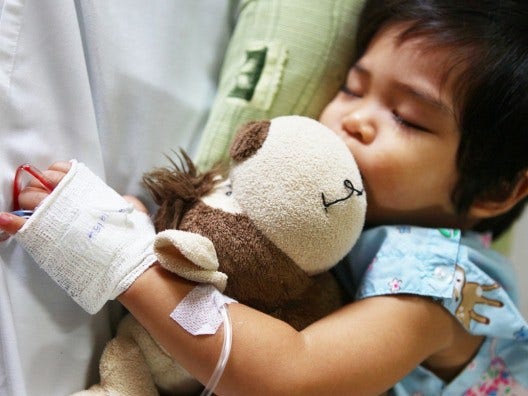New Treatment for Neuroblastoma Is in Early-Stage Trials

Neuroblastoma accounts for about 6% of childhood cancers, usually affecting infants and young children. It involves a tumor that develops in nerve cells, often in the adrenal glands that sit on top of each kidney. Some children might not need treatment. Others might need surgery. But some die from the disease, even after high doses of chemotherapy over a long period of time.
“My team focuses on kids with high-risk neuroblastoma—they’re the children whose tumors can’t be removed with surgery because the cancer has spread, such as to the bone or bone marrow. About half of them survive,” said Andras Heczey, MD, of Texas Children’s Hospital in Houston.
Heczey and his mentor and colleague Leonid Metelitsa, MD, have spent the last decade trying to adapt the technique known as CAR T-cell therapy. This treatment has seen much success in some leukemias and lymphomas, and they hope to use it to cure children with neuroblastoma. Their work has been funded by TODAY show viewers through the “Shine a Light” campaign and subsidized by the American Cancer Society.
In neuroblastoma, a type of white blood cell called a macrophage seems to fuel the cancer. Children whose tumors have more macrophages tend to have a poorer outlook (prognosis). On the other hand, children whose tumors have another type of white blood cell called natural killer T Cells (NKTs) tend to do better. “NKT cells can target and kill macrophages,” Heczey said.
Heczey is now trying the treatment for the first time in children in a phase I clinical trial. So far, in one child, a metastasis went away, and a tumor shrank considerably. “And that’s just from the lowest dose. In another child, the cancer appears to have stopped growing and spreading."
Heczey’s team got the idea to try CAR T-cell treatment by asking themselves: What if instead of using any T cells like what’s done for blood cancers with CAR T-cell therapy, we use a specific type of T cell, NKTs, to treat neuroblastoma?
Using a process similar to T-cell therapies, Heczey’s team uses a special procedure to collect NKT cells from the patient’s blood. Then, in a lab, these cells are used to produce more NKTs. A chimeric antigen receptor (CAR) is then added to change the NKTs. This allows them to target both the cancer cells and the macrophages. A molecule called interleukin-15 is also added that helps NKTs live longer after they’re put back in the patient.
Heczey is now trying the treatment for the first time in children in a phase I clinical trial.
So far, in one child, a metastasis went away, and a tumor shrank considerably. “And that’s just from the lowest dose,” Heczey said. In another child, the cancer appears to have stopped growing and spreading. Heczey’s awaiting results on others.
If all goes as hoped, the trial will advance to phase II. “Ultimately,” Heczey says, “the goal is to develop a safe and effective therapy. And so far, we’ve had some really encouraging results.”
Related News and Stories
- Researcher Studies Current Breast Cancer Screening Guidelines for Adult Survivors of Childhood Cancer
- Research Helps Parents Make Decisions About Their Child's Care—With Less Stress
- Could Infections Teach Us How to Make Treatments for Pediatric ALL Even Better?
- Adapting CAR T-Cell Therapy to Treat Neuroblastoma



